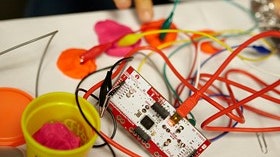Homepage
•
Learning Library
•
Blog
•
Power up STEM with STEAM to get all students engaged
Expand breadcrumbs
Expand breadcrumbs
- Learning Library
- Blog
- Power up STEM with STEAM to get all students engaged
- Homepage
- •
- Learning Library
- •
- Blog
- •
- Power up STEM with STEAM to get all students engaged
Power up STEM with STEAM to get all students engaged
By Team ISTE
March 9, 2017








